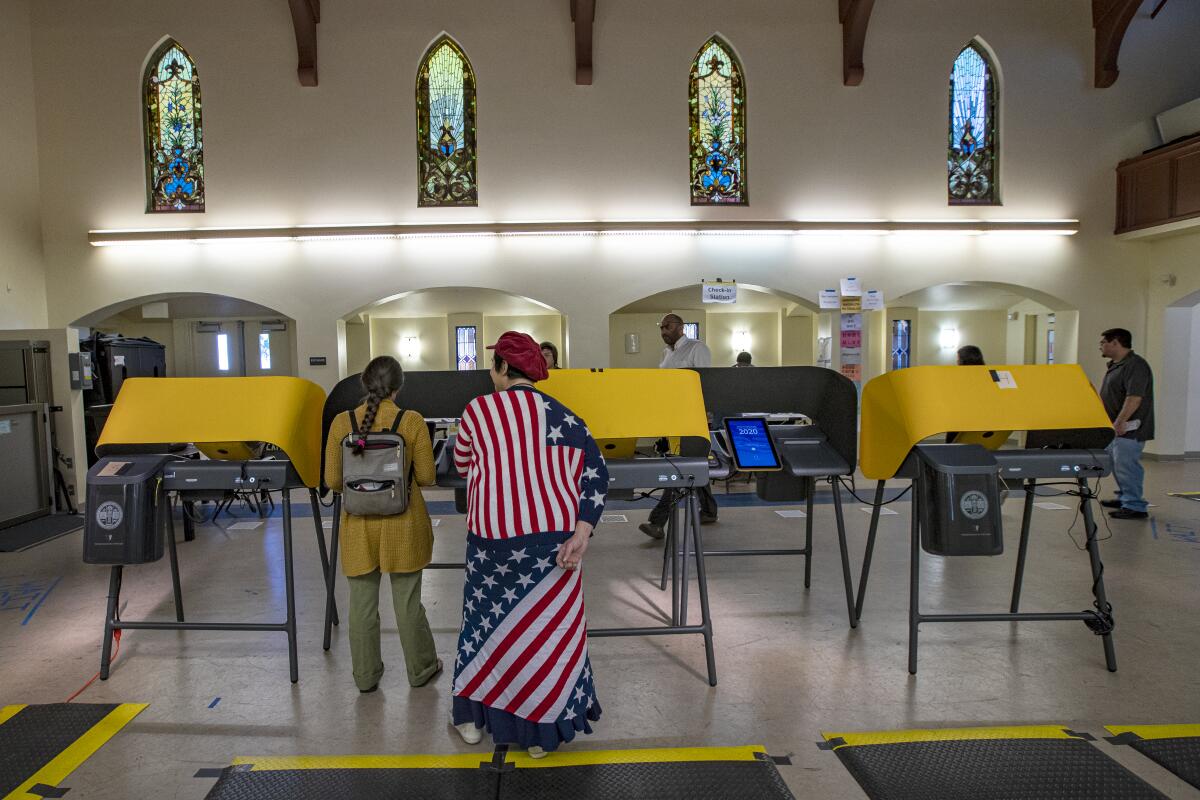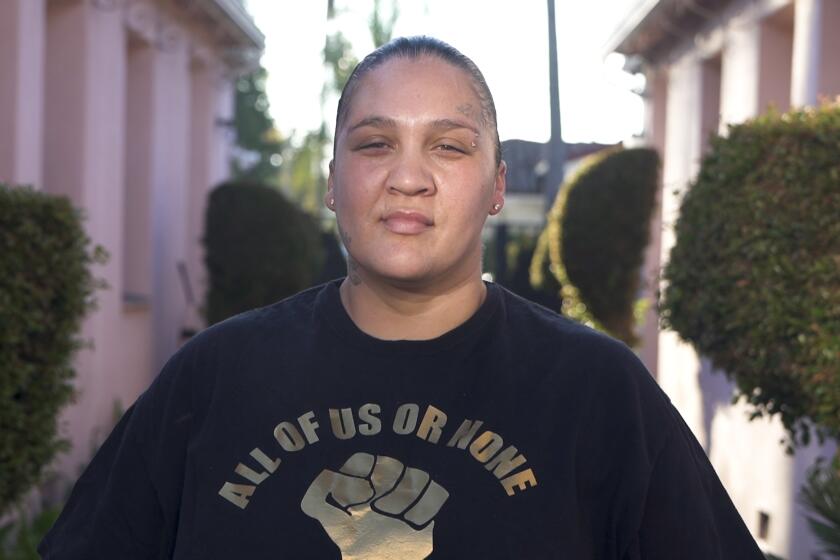Op-Ed: Modern California is all about voter access. History reveals a far grimmer voting-rights past

California is a mecca for voter access. We have early voting, vote by mail, internet registration, same-day registration, a “motor voter” program that automatically registers people when they go to the Department of Motor Vehicles to get a driver’s license and more. But this is a relatively modern accomplishment.
Over the summer, I was part of a team at the UCLA Luskin Center for History and Policy that began looking at the history of absentee voting in California, expecting to find a story line of steadily increasing voter access. But after poring over voting data, legislative digests, news stories and other documents, we found that California took explicit steps throughout the 19th and early 20th centuries that kept many working-class and nonwhite citizens from voting.
This began to dramatically turn around in 1960. But 60 years later, those who vote in California elections do not fully reflect the diversity of the state.
California’s original Constitution, adopted in 1849, allowed only white, male citizens to vote. After the Civil War, change seemed to be on the horizon when the 15th Amendment gave African American men the right to vote across the country.
But California resisted the will of the country. It was one of only two free states — Oregon was the other — to refuse to ratify the 15th Amendment in 1870. It became law nonetheless, resulting in the enfranchisement of about 1,730 Black male adults in California.
Still, voting discrimination persisted. Most Native Americans were excluded from U.S. citizenship, and voting, until 1924.
California residents born in China were also prohibited from voting.
Under federal law, Chinese immigrants could not be naturalized, and the California Constitution was amended in 1879 to say that “no native of China” would ever be able to vote in the state. Many immigrants from other countries were also excluded under an 1894 constitutional amendment requiring English literacy to vote.
California had long restricted voting by race — and class — through voter registration laws considered to be “among the earliest forms of voter suppression,” according to author David Litt, who has written extensively about issues of democracy.
This has been the case in California since passage of the Registry Act of 1866, the first law to require voter registration in the state. Suddenly, would-be voters had to take time off work, trek to the county seat and deal with the county clerk — a tall order for immigrants, persons of color and the working poor. California also had a lengthy residence requirement for voters that tended to exclude the transient and the poor. This was compounded by an 1899 law that required re-registration every two years.
In 1930, California returned to permanent voter registration — but failure to vote in either the primary or the general election resulted in registration being “purged.” This happened every two years to the 30% of registered electors who failed to vote. California voting law was thus inhospitable to casual voters and those who moved frequently.
World War II and its aftermath helped the state change course. America’s wartime alliance with China upended anti-Chinese laws, including restrictions on immigration and naturalization from that country, paving the way for Chinese immigrants to vote in California after 1943.
In the late 1950s, possibly influenced by the civil rights movement or the Democratic Party’s increasing control of the state Legislature, California voter laws began to pivot toward inclusivity. In 1957, the Legislature encouraged county clerks to promote voter registration by establishing convenient places to sign up. By 1961, the state had created volunteer “citizen deputy registrars,” paving the way for voter registration drives by civic organizations and community groups.
Almost every year since, the state has passed laws to make voting easier.
In 1978, a state law relaxed requirements for requesting an absentee ballot and allowed anyone to vote absentee, a privilege previously restricted to a relative few who included voters on business trips, the physically disabled and soldiers serving away from home. This approach was expanded in 2007 when “absentee voting” was re-imagined as “vote by mail” — no longer a stopgap, quasi-emergency mechanism but just another way to cast a vote.
California finally resolved the “voter purge” problem in 1975 by ensuring that voters who did not move stayed on the roll. This dramatically reduced the number who were thrown off the rolls, from the typical 20% to only 5.4% in 1976.
In the 1970s the state Constitution was amended to strike down the English literacy law and the lengthy residence requirement. A 19th century felon disenfranchisement law was abolished in 1974, and if Proposition 17 passes today, ex-felons on parole will also be granted the vote. In recent years California has enacted many other laws and policies to make registration and voting easier and more accessible.
California voters are deciding in the November election whether to approve Proposition 17, which would allow people convicted of felonies who are on parole to vote in future elections in the state.
Despite this record of increasing enfranchisement, the California electorate remains older, whiter and wealthier than the population at large. In Los Angeles County, election figures show that equally populated supervisorial districts consistently deliver unequal electorates, with wealthier, whiter districts casting as many as 40% more votes than those with heavily Latinx, working-class populations. This stems from lower citizenship, registration and turnout rates among voters of color as compared to whites.
Recent improvements in voter accessibility, such as vote by mail, have failed to close this gap. Meanwhile, other problems that tend to suppress the votes of historically disenfranchised groups persist, including uneven translation of ballot materials, gerrymandered districts and at-large election schemes.
California’s first century was marred by state action that limited the franchise to select groups. In its second century, the state has focused on making voting accessible and secure for all. Yet barriers to full voter participation remain. Until our democracy gives voice to all segments of society, we still have work to do.
Alisa Belinkoff Katz is a fellow at the UCLA Luskin Center for History and Policy.
More to Read
A cure for the common opinion
Get thought-provoking perspectives with our weekly newsletter.
You may occasionally receive promotional content from the Los Angeles Times.











